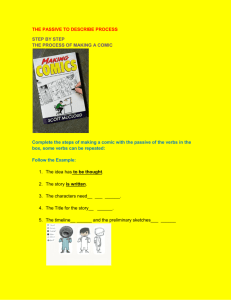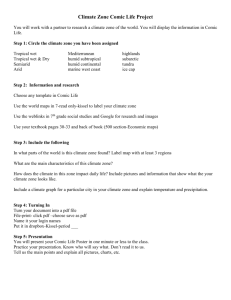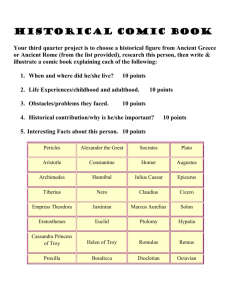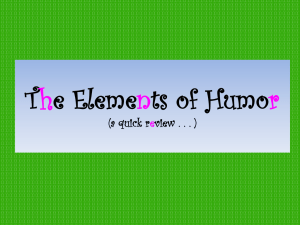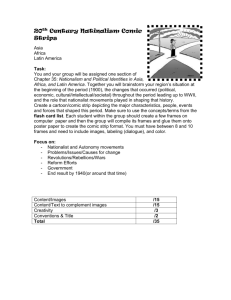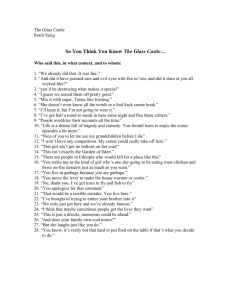Flowers for Algernon Project Choices
advertisement
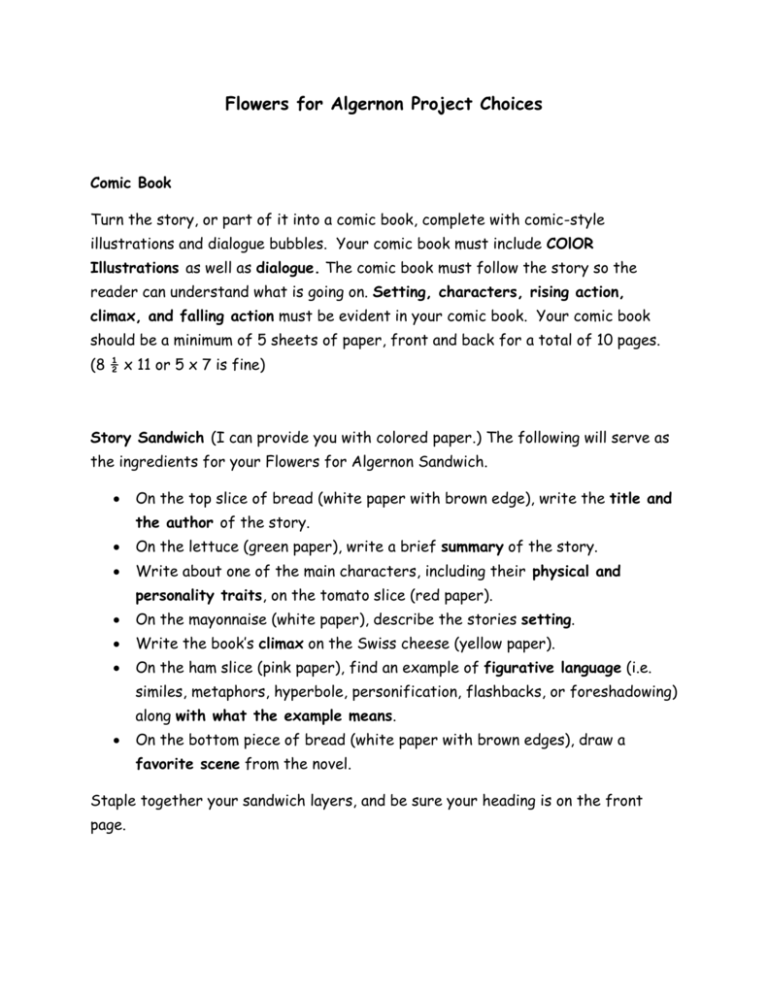
Flowers for Algernon Project Choices Comic Book Turn the story, or part of it into a comic book, complete with comic-style illustrations and dialogue bubbles. Your comic book must include COlOR Illustrations as well as dialogue. The comic book must follow the story so the reader can understand what is going on. Setting, characters, rising action, climax, and falling action must be evident in your comic book. Your comic book should be a minimum of 5 sheets of paper, front and back for a total of 10 pages. (8 ½ x 11 or 5 x 7 is fine) Story Sandwich (I can provide you with colored paper.) The following will serve as the ingredients for your Flowers for Algernon Sandwich. On the top slice of bread (white paper with brown edge), write the title and the author of the story. On the lettuce (green paper), write a brief summary of the story. Write about one of the main characters, including their physical and personality traits, on the tomato slice (red paper). On the mayonnaise (white paper), describe the stories setting. Write the book’s climax on the Swiss cheese (yellow paper). On the ham slice (pink paper), find an example of figurative language (i.e. similes, metaphors, hyperbole, personification, flashbacks, or foreshadowing) along with what the example means. On the bottom piece of bread (white paper with brown edges), draw a favorite scene from the novel. Staple together your sandwich layers, and be sure your heading is on the front page. Story in a bag, an envelope, or a box. Select a project container for your project. The container could be a paper lunch sack, a manila envelope, a can or anything else that might be appropriate. Decorate your container to convey some of the major details, elements, or themes found in the story (setting, main characters, conflict, etc.), be sure to include the title of the story and the author. Once you have decorated the container, work on the contents of your container. The following should be included: Questions/Answers – Write ten level 2 and 3 questions based on the story on ten note cards with the answers on the back. All ten questions must reflect the setting, characters, conflict, climax or resolution. Vocabulary – Create a ten-word glossary (word and definition) of unfamiliar words from the story. Figurative Language – Provide 3 different examples of figurative language in the form of a quote from the book with page number (i.e. similies, metaphors, hyperbole, personification, idioms, flashbacks, or foreshadowing) along with what the examples mean. Objects – Include five objects in your container that have a connection to the story. Attach a sheet of paper to each object that explains why the object is important to the story. The final part of ALL the projects will be an oral presentation. Each student will present their project to the class. During the presentation, students will explain all of the Bulleted items for their project. Students will also turn in their rubric for scoring on the day of their presentation.
